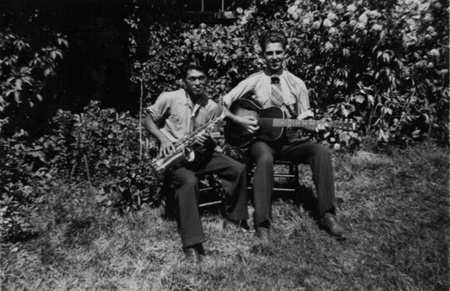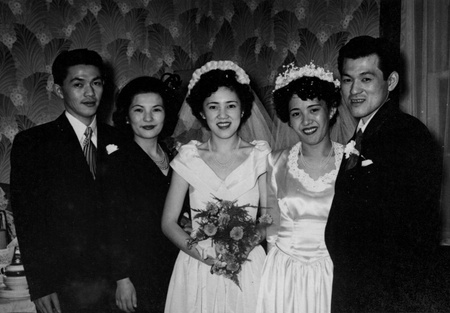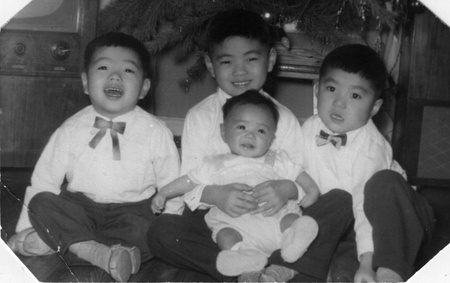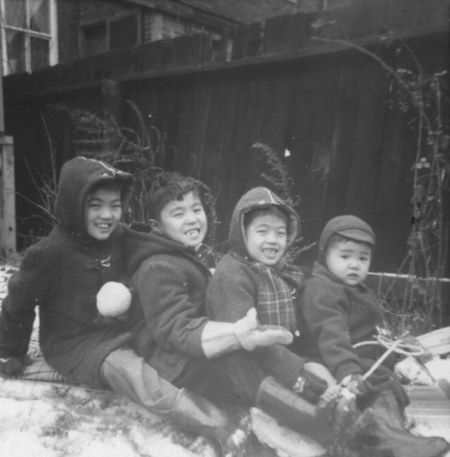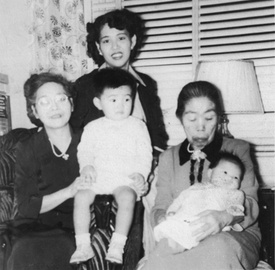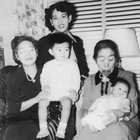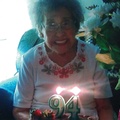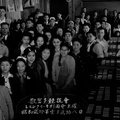The usual everyday happenings were of reacquainting with old friends, making new ones, attending dances on Fridays which were held at Labour Lyceum, a Ukrainian hall, on Spadina Avenue in the midst of a Chinese population. There were church concerts, picnics, social get-togethers, etc.
Looking for a better job after the Seguins was not easily accomplished. After a few interviews, I was able to find employment in an office as a stenographer where I was able to utilize my training in the business course. That is when I found out that my English education was inadequate.
I eventually was able to get a job as a stenographer with Alexander Murray Co., a subsidiary of Dominion Tar & Chemical Co. of Montreal. The firm was in an old building located in east Toronto (Morse Street) to which I had to take street cars daily and walked south down to the Lakeshore. The firm relocated to 147 University Avenue where I worked about three years and was then talked into changing jobs to work for the government, the Post Department, in the stenographers’ pool. I don’t know whether this was a smart move. During 1950, the Yonge Subway construction began.
Around this time I was dating my husband, Ron, who lived with several men in a large house on Jarvis Street, run on a co-op basis. I got to meet Ron’s older brother, Hisao, and his wife, Connie, also his younger sister, Sets, who had unwillingly accompanied her parents to Japan after the war. She met a Japanese-American, Yosh Kawato, who was then stationed in Japan. She returned to Canada and was awaiting governmental permission to enter the United States to join her husband (or fiancé).
It was a rather short courting period for us, and when Ron approached my parents for their permission to marry, they thought we should wait until they were able to purchase a better house from which I could leave to start our new life. We went ahead with our plans and married on November 4, 1950. I asked Sets, Betty, and Shirley to be my attendants, and I personally made their and my own gowns with the help of Mrs. Nakamura who lived with us at one time. We really had an awful day, weather-wise, with pouring rain all day. The service was at the Carlton Street United Church, officiated by Rev. Finlay, followed by a reception at the Bamboo Terrace. Mom made several dishes of sushi to augment the Chinese dinner.
We did not plan a luxurious honeymoon though we did spend our wedding night at the Royal York Hotel. The next morning we drove to Niagara Falls in our rental car. We were not allowed to take it across the border so we left it in the hotel parking lot in Fort Erie and took the bus to Buffalo. We returned to Toronto after a few days and settled in a house on Nassau Street near Spadina Avenue. We rented a flat with a sitting/bedroom and kitchen/dining room.
I still worked at the post office until I left a few months later to start a family. By this time, our parents had purchased a three-floor triplex in the Dufferin/Bloor area and were generous enough to allow us to rent a large kitchen/dining room and a bedroom on the second floor. All the other rooms were for the family. I cooked the meals for both families as Mom was working and it was convenient for me doing the meals for all of us. Dad was still working for the bag company, Mom was working at a lingerie firm, Mary was going to Central High School of Commerce, Shirley started at Greyhound Photo Service, and Betty was still at her first job. Frank started his own TV repair business at home. In those early days, televisions needed repairs quite often but I don’t think he did too well—he was no businessman.
All our four boys were born at the Wellesley Hospital while we lived at our parents’ home. There were altogether 14 living in the house. Can you imagine me doing the laundry in the basement of the house, not even having a wringer washer, no diaper service, only cloth diapers?! But, I do remember the neighbour mentioning how white they were on the clothesline!
While living on Shanly Street, there was a reception in the Convocation Hall at the University of Toronto to greet the then Crown Prince Akihito of Japan on his way to England for the coronation of Queen Elizabeth, as his uncle, Prince Chichibu, did in Vancouver. It was the first time I heard the Japanese anthem played after the war, and it brought tears to my eyes. Years later I remember taking our sons to the Exhibition Ground to welcome Princess Margaret to Toronto on her visit. Seeing royalty is rare, and I was unable to see the Emperor and Empress when they visited Canada in 2009.
When I was expecting our third child, Aunt Ishikawa living back in Penticton, B.C. was seriously ill with cancer. Mom decided to go to B.C. and offer moral support during this difficult time. It was a warm winter, and I remember going to see her off with the boys at the then small Malton Airport. There’s such a difference in the size and appearance of the airport from then and now. Mom returned after Auntie passed away.
The following are our children: Douglas Masami (1951-2016), acartographer, single; Robert Tadashi (b.1952. Architect), moved to New Mexico, married Barbara Pellant, now resides in Texas, no children); Frederick Minoru (b.1954), English teacher in Tokyo for almost 30 years, single. Now back in Toronto; John Isao (b. 1957), acivil engineer, married Cindy Oyama. They live in Toronto, and have three children.
The boys attended Dovercourt Public School, went to Westmoreland United Church on Sundays, although we were not a very religious family. We stayed with our parents for about ten years until the summer of 1960, when we were finally able to purchase our own home.
Mom and Dad were in Japan at the time, the first time Dad went back to his birthplace. He was determined not to go back until he was financially able to erect a decent ohaka for his parents, which he managed to do. The reunion between the brothers after so many years and hardship was so heart-wrenching, Mom said it brought tears to people around them.
When we were looking for a house to purchase, we encountered what I felt was discrimination for the first time, but the boys did mention they often faced it. When we offered to pay the listed price, we were refused and found out later that the neighbours had asked the seller not to accept any offers from the Japanese. We finally got a house in a predominantly Italian neighbourhood. The boys registered at the local school. There was a school closer but it was a Catholic school. By this time Bob and Shirley had their own home and had started their family. Bob’s parents from Montreal came to live with them. Frank was already married. The house was too large for Mom and Dad, so when they returned from Japan, they bought a small bungalow on Ronald Avenue. I think Dad was retired or did so soon after.
Early in the winter of 1963, Dad, wishing to be of some help, went out to shovel snow from the mutual driveway of his neighbour’s and fell, and was later found by a neighbour. He was taken to Northwestern Hospital, and sadly passed away with pneumonia the following May.
Mom had a job as a charwoman and kept on working. She had more leisure time to herself. She learned to play the shamisen, did some odori with a group of dancers, visited Japan for the second time, and spent some time with her sister, Osae, in Osaka. On the way back to Toronto, she made a stopover in Vancouver and attended one of our cousins’ wedding. When she retired several years later, she used to love visiting friends with Kenny driving her around, inviting family and friends for dinners (which was extra work for Mary). Uncle Gengo came to visit her from Vancouver and they enjoyed going out for walks.
The boys attended school and when they were old enough, it allowed me to return to the workforce. I first started as a secretary to the controller of a toy company, where Doug was able to get a summer job in the production department. That is the reason why he did not accompany his brothers and me to Montreal for the 1967 Expo. We stayed with Bob’s sister for a week and I drove the boys to the Expo daily. It was only a year after I got my driver’s license and people were amazed I had the nerve to drive that far so soon after acquiring my license.
Ron and I did not have the education nor experience to guide our sons to higher education, but I am proud to say that our sons seemed to have the “know how” and applied themselves to higher education without any financial help from us. I guess they knew we were not in a position to do so.
Ron did go out on his own when his investment policy matured. He started his own auto body shop in the Dupont/Symington area, working on his own with one painter helping out. But, unfortunately, it did not go well and he had to give it up. Later, he was thinking of going into the cleaning/pressing business and asked me whether I would work with him to help out. With both of us not having any experience in the business, I told him I would rather work in a regularly-paid position. Maybe it was not the right decision, we should have taken a gamble (we would never know).
At one time, Ron’s Mother who was living with his oldest brother, Akio, in the Okanagan after coming back from Japan, came to Toronto to live with us. Apparently, their old family friend in Toronto had advised the brothers to arrange for her return as she was all alone in Japan. When she received her Old Age Pension retroactively in a lump sum, she made a trip to Japan. If she had not sold her home when she left Japan, I am sure she would have rather stayed in Hiroshima where she had a place to call her own and where her sister still lived.
To prepare for her arrival, Ron with help from the boys, did a commendable job of turning the open unfinished basement into decent living quarters with extra washroom, bedroom, recreational area, which made it possible for his Mother to have her own room on the main floor. However, she was sadly “shunted” from one home to another and she passed away with pneumonia at the age of 96.
I switched jobs after working at the toy firm for a couple of years, beginning as a secretary to a couple of sales managers at RCA Inc. Initially, the office was on Castlefield Avenue quite close to Mom’s home and I had visited several times during my lunch hour. When I visited one day, I found her trying to light a match to a piece of paper on the kitchen table. It may have been a religious writing which she did not wish to discard with other garbage.
I then realized that she should not be left alone without supervision when no one was home. It was a difficult decision to make but the family had to find a retirement home where she could be cared for. We found Spencer House, a living-assisted seniors’ home near Lakeshore Blvd. We hated to uproot her but we had no choice.
After a few months’ living at the home, she was told that she had to go to the hospital for an examination as something was not quite right with one of her legs. I really did not understand what the problem was but they had to amputate her leg. I don’t think Mom was diabetic. Frank was in charge, so he had the responsibility to make the decision and Mom ended up receiving the surgical procedure at Toronto Western Hospital.
Mom could not return to Spencer House in her condition and was transferred to Castleview Nursing Home where the staff was qualified to take care of her. It was really a bad time for her, but there were several Japanese residents and she eventually made friends. It was not the best place for an old person, but our hands were tied. We made sure that one of us visited her daily.
After a period of time, we were told that she had the same problem with her other leg and would have to lose it as well. She came out of the operation okay but it was pitiful to hear her say that she must look like a daruma san. Can you imagine how she felt? She just gave up and quietly slipped away a few days after her 81st birthday on January 15, 1981 while we were with her. (At this time of my life now when I am not at my best with my stroke, arthritis, and ongoing asthma, etc., I realize it must have been a harrowing experience for Mom when she lost both her legs.)
Looking back, I know now that Mom did not have an easy life but she never complained. We owe so much to Mom and Dad throughout our lives and regret we had not been able to take better care of them in their old age. The year 1981 was a bad year. After we lost Mom, Ron’s brother Hisao succumbed to colon cancer and passed away at just 50 years old, and Bob Takagi lost his father in Montreal to cancer.
A few years later in 1984, I took one month off from work as Ron and I had a chance to join a group of travellers from Alberta and Ontario to take a two-week tour of Japan sponsored by a local Japanese publication. It was my first trip to Japan but Ron had been there when he was a young boy. Shirley and Bob were in the group.
After two weeks with the group Shirley, Bob, Ron and I continued the trip on our own. We were able to go to Hiroshima, Ron’s parents’ furusato. When his family was returning to Canada those years ago his elder sister, Fumiko, did not accompany them back as she preferred to stay with Mother Mende’s sister as she got used to living in Japan. She had lived through the war, the loss of her husband, the horrible atomic bombing which, sadly, she had witnessed with her own eyes from about six kilometres away (having been removed from the city and living in the country at the time). It was a heart-warming reunion for Ron and his sister after all those years. We got to meet her family, three sons, two were married and had a family, one was still single. The eldest, Eiki, had visited us in Toronto when he was in the States on a business trip to Detroit (he worked at the Mazda Auto plant in Hiroshima).
I had a chance to meet Mom’s younger sister, Osae, in Osaka, who had remained in Japan when grandfather came back to Canada with Mom and sister Yae years ago. She was so happy to see us, treating us to a Japanese meal at a restaurant in the nearby mall. We visited Bob’s relatives in Shiga-ken, and took in a performance of the famous Takarazuka (all women theatre group) performers. We also had a chance to visit well-known Itsukushima (torii in the water at high tide) with Ron’s sister and his cousin. Shirley worked hard to get tickets for the Kayo Hall for the weekly concert. Bob was able to see his former fellow workers, who were employed at the North Toronto Toyota dealer and who were back in Japan. They were so happy to see Bob again.
To be continued...
© 2021 Kay Mende


